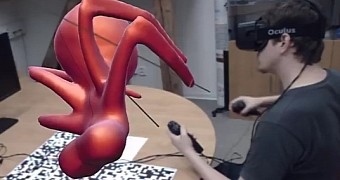3D printing is all well and good, but printers can also turn into the most useless exhibit pieces if you don't have the means to produce 3D models they can use. Fortunately, virtual reality has the solution.
It's true that there are plenty of 3D models, made via CAD software, for download on the Internet, some for a fee and some for free.
However, the whole point of 3D printing, consumer 3D printing anyway, is to let you create whatever you can think of. And you can't actually create anything without the model.
Sure, CAD programs are great and all, but they aren't the easiest things to learn, and they don't provide the ease of use you may want either. A company by the name of VRClay believes that virtual reality can be the answer to everything.
The VRClay 3D design software
Like so many other companies before it, the outfit based in the Czech Republic has named its first product after itself.
Branding tactics aside, the program allows you to create a 3D model by playing a virtual reality game, so to speak. It kind of makes us think of Johnny Quest.
The program works with Oculus Rift, the virtual reality headset that has been in the news for months, and was singlehandedly responsible (well, almost) for virtual reality becoming its own sub-market on the gaming front.
Now, it's broadening its borders from gaming to additive manufacturing technology. VRClay lets a person wearing Occulus Rift grab a model and do a variety of things to it, like extending it, flattening it, widening it, etc. You can even just “grab” the object and turn it on its sides for inspection.
All in all, it's a much more intuitive way of building a 3D object in virtual space. Once you're done, all you need to do is hit the print button and wait for the 3D printer to produce a physical version of it from plastic, metal, sandstone or whatever else your particular machine can cope with.
Availability
Unfortunately, no one seems to know when the VRClay application will reach the market, since the company is still combing through initial feedback. Once it happens, though, we definitely expect everyone on the education, small business, and home markets to give it at least a cursory glance. Well, everyone who owns an Oculus rift anyway.
It's too bad that the Oculus Rift doesn't have what it takes to really let you use your hands. Hopefully, someone perfects the smart glove idea soon.

 14 DAY TRIAL //
14 DAY TRIAL // 